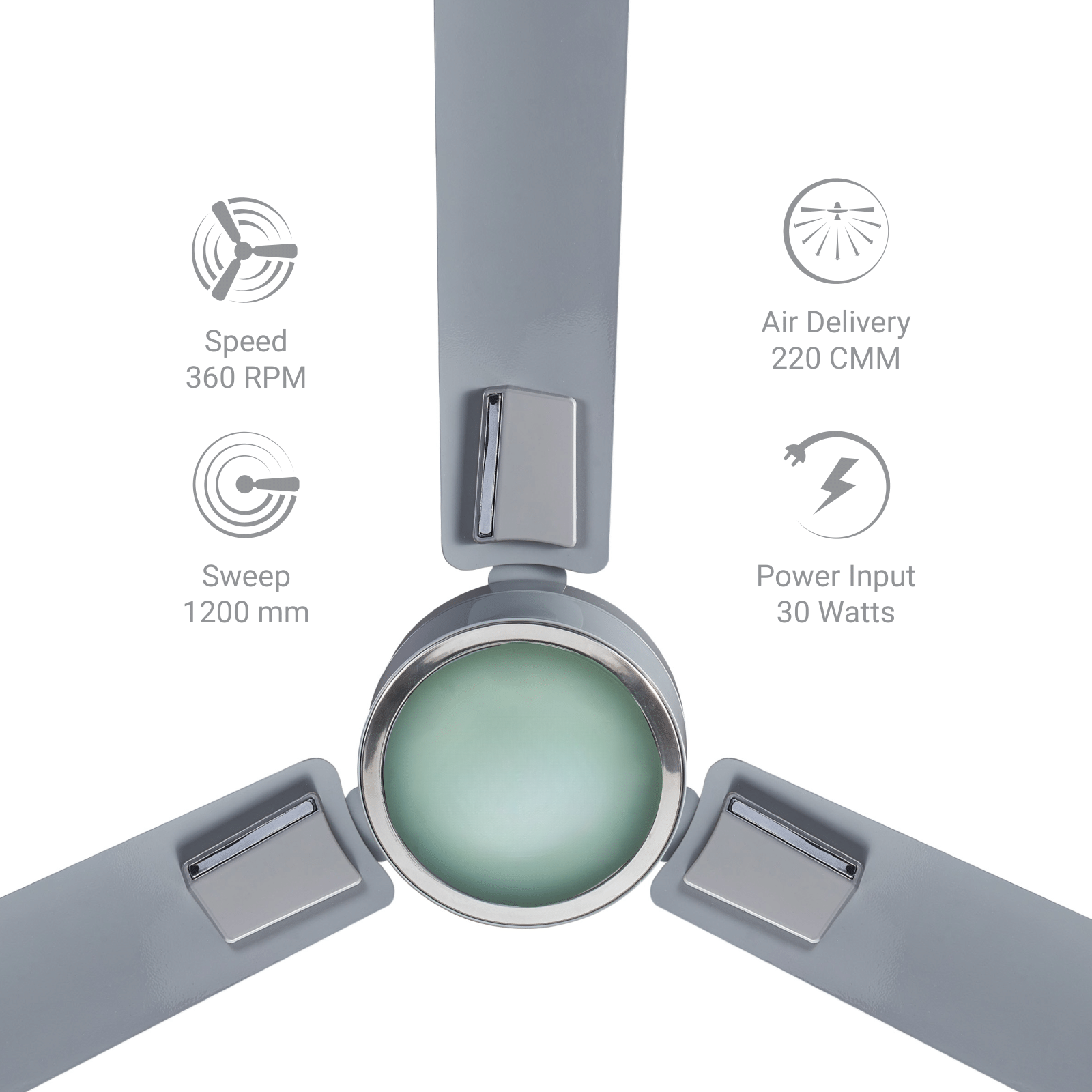Why VENTUM Fans Deliver Greater Energy Savings?
FROM VENTUMFAN, INDIA’S TRUSTED ENERGY-EFFICIENT CEILING FAN
Introduction: Looking Beyond Just Input Power
When evaluating BLDC ceiling fans, many buyers tend to focus only on the input power ratings—commonly between 28W to 35W for a 1200mm BLDC model. While this figure is important, true efficiency goes much deeper. Key aspects such as airflow performance, power factor, total harmonic distortion (THD), and idle power consumption are equally critical in determining overall energy savings and product quality.
Ventumfan stands out by delivering superior results across these essential parameters compared to many other BLDC fans available in the market, including Atomberg Renesa, Crompton Energion, and Havells Efficiencia. At the same time, Ventumfan ensures complete transparency in its specifications, so customers know exactly what they are choosing.

1. Airflow Efficiency: Why Input Power Alone Doesn’t Tell the Full Story
When it comes to BLDC ceiling fans, not all input power ratings are equal. While most BLDC fans in the 28W–35W range claim to deliver airflow between 210–235 CMM, the reality is often different.
Common Misleading Practices:
Ignoring Airflow vs Power: A fan with lower input power may also be delivering lower airflow, making its efficiency incomparable to a higher-power fan with better airflow.
The “5th Speed” Trick: Some brands deliberately cap the 5th speed slightly below the real maximum to showcase a lower input power on spec sheets. Later, they introduce a “boost mode” that consumes extra power to deliver the actual airflow, misleading consumers.
The Reality:
Most BLDC fans in this category still provide airflow within 210–235 CMM, with only a few reaching the upper end.
Ventumfan’s Performance:
The Ventumfan consumes just 28W while delivering 220 CMM, and at 35W it reaches 260 CMM, outperforming many BLDC fans in airflow efficiency.
Ventumfan avoids “boost mode” gimmicks, offering transparent performance.
Even its 1200mm models deliver 230 CMM at 35W, proving strong efficiency across ranges.
For perspective, older ACIM ceiling fans consume 75W–80W to deliver ~230 CMM. Even newer 1-star ACIM fans consume ~50W for ~220 CMM. In contrast, BLDC fans like Ventumfan achieve 230 CMM at nearly half the power, making them far more cost-effective.
2. Power Factor (PF): Efficiency Beyond the Home
What is PF?
Power Factor indicates how efficiently a device draws power from the grid. A PF closer to 1 means less wastage.
Indian standards require PF > 0.9 at maximum speed for BLDC fans.
But in real life, fans run mostly at medium speeds (~15W input), where PF often drops.
Ventumfan’s PF Advantage:
PF is >0.9 even at the 2nd speed step, and remains at 0.8 even on the lowest step.
Many other BLDC fans only meet the 0.9 PF requirement at maximum speed. At lower speeds, their PF drops sharply, leading to hidden energy waste.
Why it Matters:
A PF difference between 0.8 and 0.93 at medium speed equals ~13% power loss (~2W per fan).
Across 40 crore fans in India, that’s a massive national energy waste.
Though consumers don’t see this loss on bills (it’s absorbed by the grid), it costs the government and environment.
Ventumfan is engineered to maintain a higher PF across all speeds, maximizing real-world efficiency and reducing grid-level wastage.
3. Total Harmonic Distortion (THD): Protecting Your Appliances
What is THD?
THD refers to distortion in electricity caused by appliances. High THD can reduce power quality and harm other connected devices.
Indian standards mandate THD < 20%, but lower is always better.
Ventumfan’s THD Advantage:
Ventumfan’s THD is <5%, far below industry requirements.
Benefits include:
Reduced stress on household wiring
Minimal interference with other appliances
Better overall electrical stability
4. Idle Power Consumption: The Hidden Energy Drain
Even when switched on but not spinning, fans consume power.
Ventumfan’s idle power consumption is only 1–1.5W, preventing waste.
Many other BLDC brands ignore this, leading to unnoticed electricity loss over time.
Why Ventumfan Saves More
Ventumfan’s energy efficiency goes beyond just input power:
Higher airflow per watt (without misleading “boost mode”)
Superior PF across all speed levels, saving energy for both consumers and the grid
Lower THD (<5%), protecting appliances and improving power quality
Minimal idle power draw, avoiding hidden wastage
Frequently Asked Questions (FAQs)
1. Does Ventumfan save more electricity than other BLDC fans?
Yes. Ventumfan ensures high airflow per watt, superior PF, lower THD, and minimal idle consumption—delivering maximum efficiency.
2. How does Ventumfan compare in airflow?
While most BLDC fans deliver 210–235 CMM, Ventumfan ranges from 230 CMM up to 260 CMM, while consuming only 25–35W.
3. Why is Power Factor important, and how does Ventumfan help?
A low PF wastes energy at the grid level. Ventumfan maintains a higher PF at all speeds, reducing wastage and supporting overall energy efficiency.
4. How does THD affect my home’s electrical system?
High THD degrades power quality and may damage appliances. Ventumfan’s THD is below 5%, ensuring electrical safety and stability.
